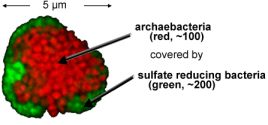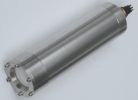
BioGeoChemistry of Tidal Flats
The Wadden Sea: A source of methane?
Methane (CH4) is a reactive trace gas with an atmospheric residence time of about ten years. On a large scale it contributes to the earth's climate and carbon budget. The proportion is about 15% of enhanced greenhouse forcing. It participates in the photochemical regulation of tropospheric ozone (O3) and hydroxyl radicals (OH) with simultaneous formation of H2O. In the troposphere, CH4 is oxidised by reaction with OH, yielding CO2 and CO.
Methanogenesis through degradation of organic carbon occurs in sediments below the sulphate reduction zone and methane diffuses partly into the water column.
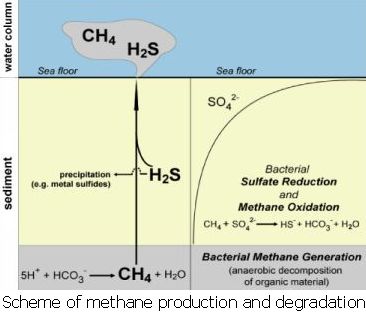
Within the sediment methane is degraded by microorganisms. The most common way is the aerobic oxidation by MOB (methanotrophic bacteria). A second possibility is the aerobic oxidation by AOB (ammonia oxidizing bacteria), but it is rather rare.
| The third type of degradation forms the anaerobic methane oxidation by consortia of archaebacteria and sulphate-reducing bacteria. The latter mechanism is also rare, as only two aggregates per 105 cells have been found within Wadden Sea sediments.
Only a minor part of the methane entering the water column reaches the atmosphere, as most of the methane is oxidised by aerobic microorganisms in the water column as well. |
Consortia of archaebacteria and sulphate-reducing bacteria, Boetius et al. (2000)
|
|
Methane sensor
|
The aim of our sub-project is to budget the methane fluxes into and out of the backbarrier area. Dissolved methane in water is continuously measured with a methane sensor (left).
|
Measurements in May 2003 in front of a tidal outlet (Otzumer Balje) at the 10 m water depth line near Spiekeroog island show a net export of dissolved methane to the open North Sea (below), which is shown by higher concentrations during low tide when compared to high tide.
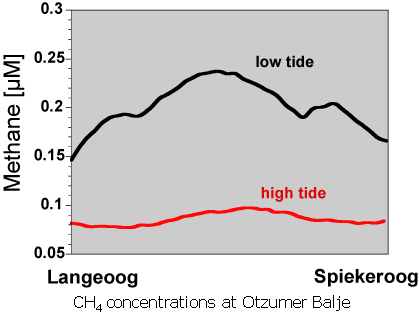
Long-term measurements at the time-series station show a tidal cyclicity with maxima at low tide. Concentrations of dissolved methane at this position seem to be modulated by wind speed and wind direction, respectively. The specific dependence of methane concentrations on wind current has to be investigated by time-series analysis and/or interclass correlations, which are helpful tools to identify time shifts.
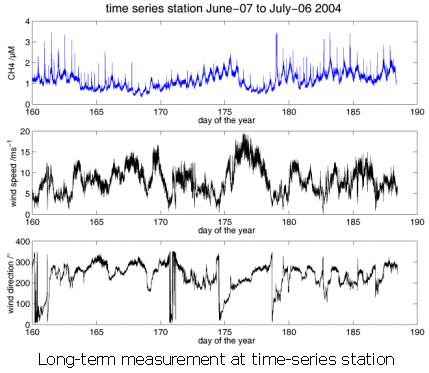
| << back
|
Publications |
